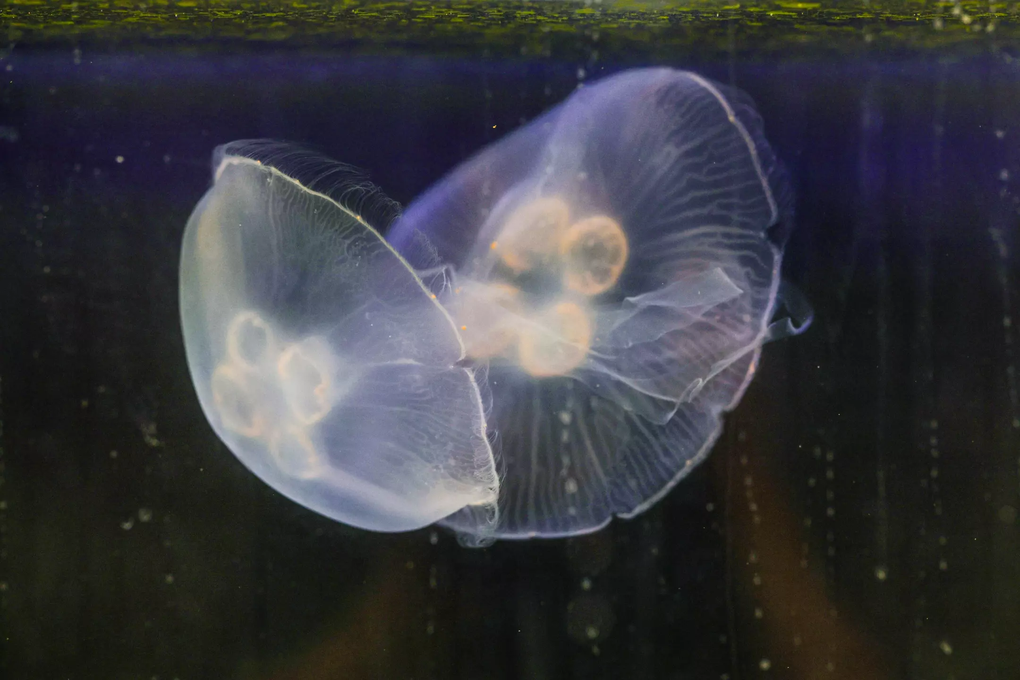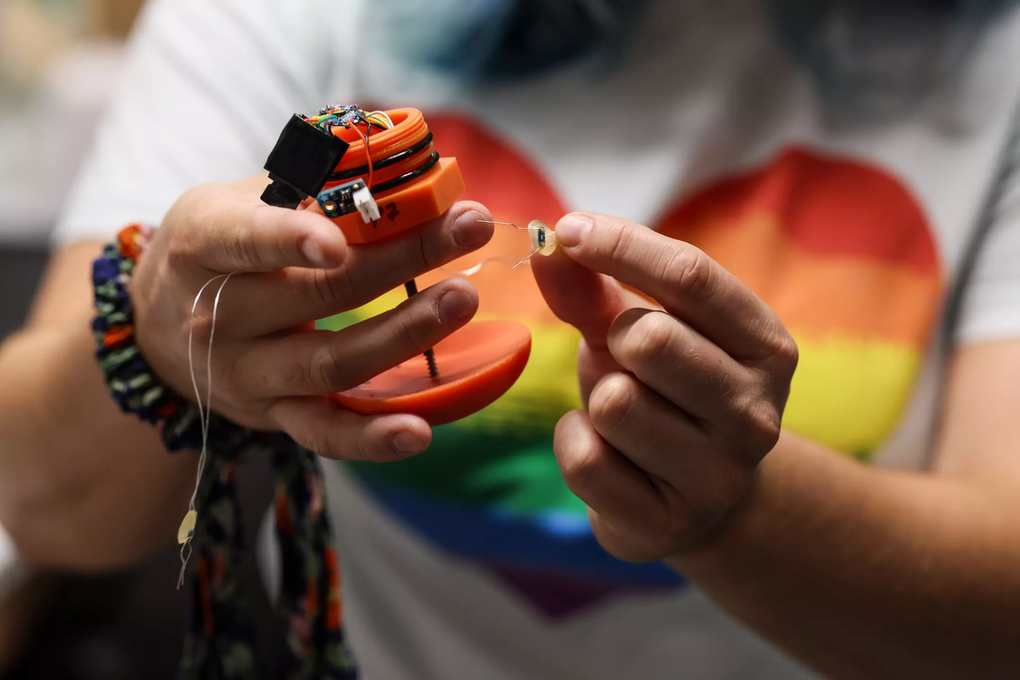Biological robots, modified from living creatures, have been a familiar theme in science fiction movies. Now, what seemed only in the imagination is gradually becoming a reality thanks to the efforts of scientists.
At the Dabiri Laboratory at the California Institute of Technology (USA), scientists are developing a unique type of biological robot: moon jellyfish transformed into robots.
The goal of this project is to explore the mysteries of the deep ocean at a significantly lower cost than traditional seabed exploration robots.

Moon jellyfish are widely distributed and found throughout the oceans (Photo: Dabiri Laboratory).
At first glance, these robotic jellyfish retain the soft, transparent, and ghostly appearance of regular jellyfish, with their bell-shaped bodies moving gently in the water. However, upon closer inspection, one can recognize the presence of machinery and wires inside their bodies.
Scientists will implant sensors inside moon jellyfish, allowing them to freely dive deep into the ocean. They hope these jellyfish robots will revolutionize the way humans monitor the ocean.
“We just attach sensors to jellyfish and have little to no control over where they go,” said Noa Yoder, a researcher in Dabiri’s lab. “These devices are very low cost and easy to scale up to entire jellyfish colonies.”

Technological devices were implanted by scientists into the body of jellyfish (Photo: Dabiri Laboratory).
Why jellyfish?
The reason scientists chose jellyfish over other marine creatures to transform into robots is because jellyfish have no central nervous system and no pain receptors. This makes them ideal animals for painless implantation of devices.
Furthermore, jellyfish also have an amazing ability to regenerate, being able to regrow lost body parts, helping them recover quickly just 24 hours after removing the device.
The equipment attached to the jellyfish includes a controller, a GPS transmitter, a pressure sensor, a temperature sensor, and an SD card for recording data. All of this equipment is housed in a waterproof, 3D-printed structure about half the size of a $1 bill.
The controller will attach electrodes to the jellyfish, allowing the jellyfish's muscles to be activated and contracted, thereby controlling them to move in the direction desired by scientists.

Jellyfish become biological robots after having electronic devices attached to their bodies (Photo: Dabiri Laboratory).
Challenges and prospects
However, the project still has some shortcomings that need to be overcome. Currently, the controller can only control the jellyfish to swim up and down, lacking a mechanism to control the jellyfish to swim horizontally. Scientists are actively looking for a solution to this problem.
Another challenge is the ability of the apparatus to withstand the pressure when the jellyfish dives to great depths. Jellyfish can swim to depths where the pressure is up to 400 bars, equivalent to the pressure of 15 African elephants pressing down on a human.
The current 3D structure of the device cannot withstand such great pressure and is prone to damage. To solve this problem, scientists plan to develop a device housed in a reinforced glass sphere, similar to the type of glass used in deep-sea robots and submarines.
In addition to moon jellyfish, researchers are also experimenting with transforming many other jellyfish species into robots, with the goal of finding suitable native jellyfish species to serve the project in specific areas.
“We’ve always tried to create robots that mimic the abilities of wild animals,” Noa Yoder said. “But this project takes it a step further and uses the animal itself to transform into a robot.”
This opens a new era in biorobotics, promising groundbreaking discoveries in the oceans and beyond.
Source: https://dantri.com.vn/khoa-hoc/bien-sua-thanh-robot-sinh-hoc-tu-vien-tuong-den-hien-thuc-20250725010854606.htm


































































































Comment (0)